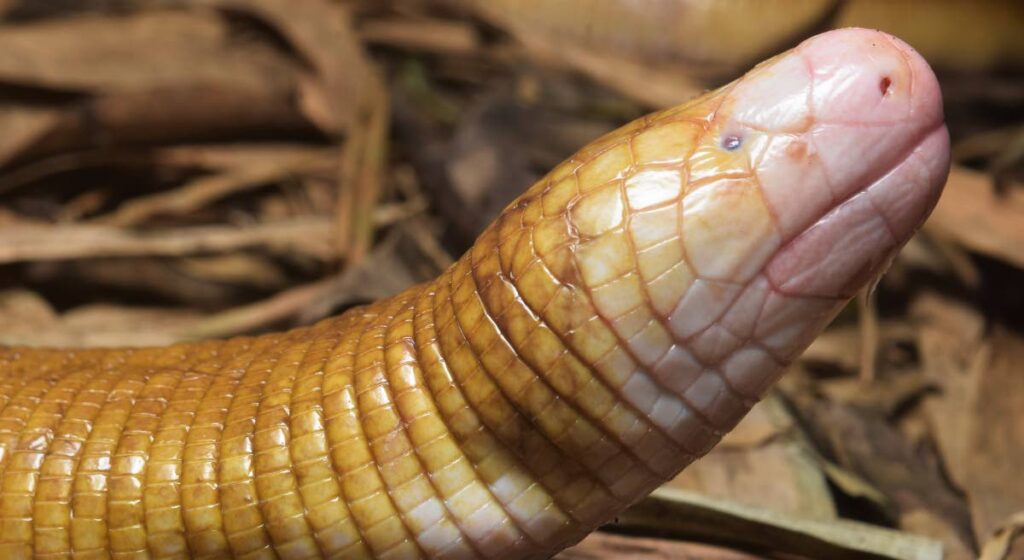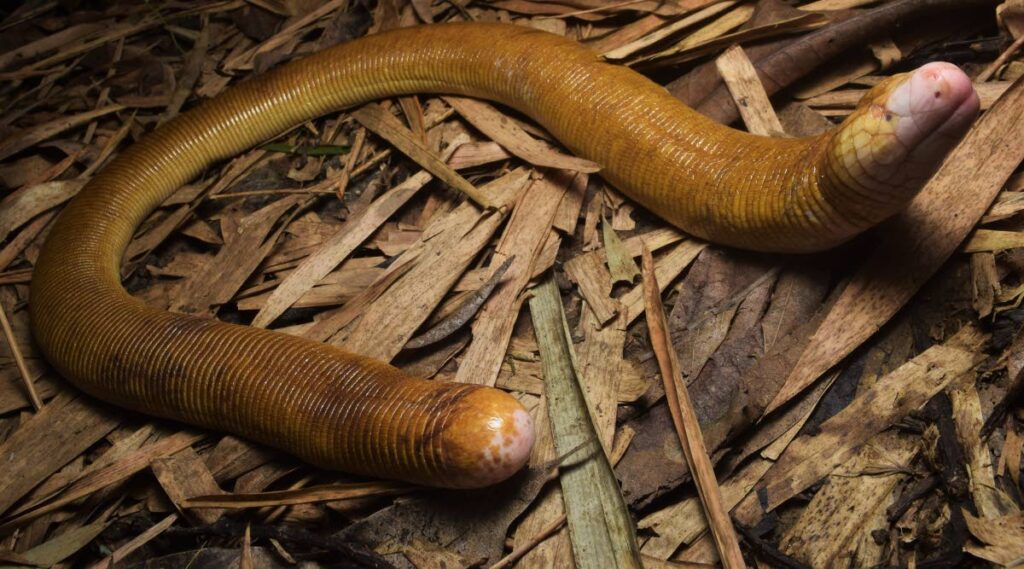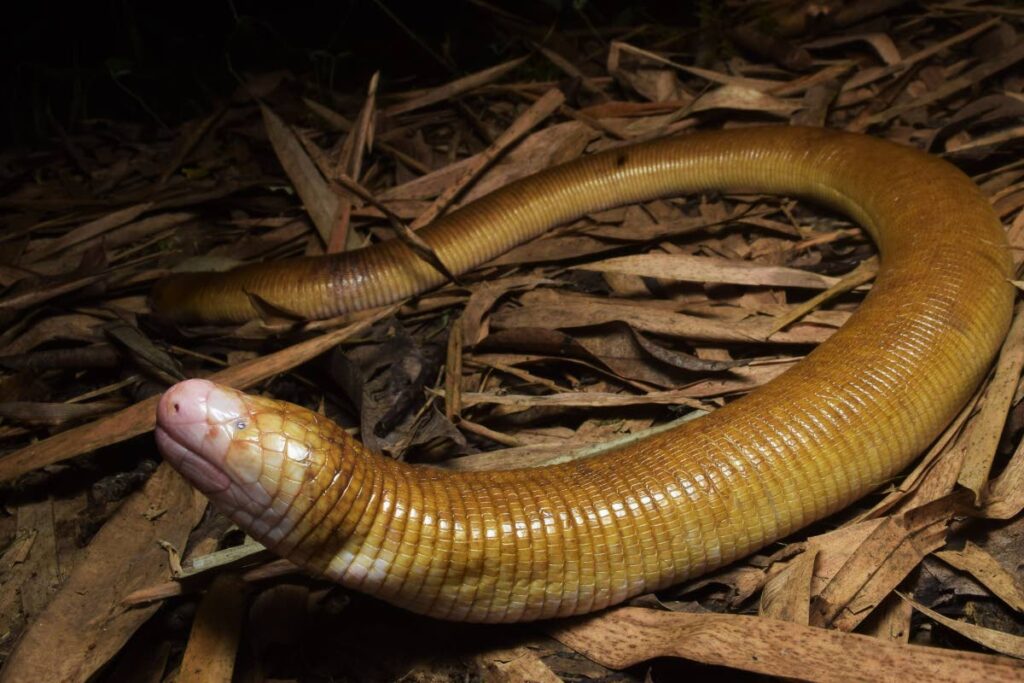The red legless lizard, not a worm nor a snake

When you think of a lizard, it’s not uncommon that the first image which comes to mind is a long slender creature scurrying across yards or even climbing the walls of your home.
But did you know there’s a lizard with no legs, so instead of scurrying and climbing it actually moves like a caterpillar?
The red legless lizard (Amphisbaena alba) is often confused for a snake or a large worm.
But herpetologist Rainer Deo told Newsday Kids it is actually one of only two species of legless lizards found in TT.
He said, “This lizard is characterised by several very distinct traits. However, the most noticeable is the lack of any limbs.”
When moving, Deo said the lizards use rectilinear locomotion which is the movement pattern used by caterpillars and some snakes around the world.
In this type of movement, muscles contract in waves across the body of the lizards to allow for effortless back and forward movement.
This movement pattern is particularly helpful given the lizards spend most of their times in tight underground burrows.
“It’s quite uncommon to see this lizard since it spends most of its time underground in burrows created by leaf-cutting ants," Deo said.
“Their specialised scales also help them through burrows. Even though these scales are smooth and rectangular, they are patterned in such a way to give the lizard a 'ribbed' appearance.

“This texture, along with its body’s movements, helps the lizard to grip on to surfaces and to excavate its burrow.”
Growing up to 80 centimetres in length, legless lizards have very small and beady eyes.
The eyes are functional but do not really serve much of a purpose especially when the lizards are underground. Instead, they rely on their tongues for navigation.
“Similar to snakes, and other lizards such as iguanas, the limbless lizard uses its tongue to 'taste' the world around it," Deo explained.
“Chemical trails picked up by its tongue would lead the lizard to its prey, a potential mate and to its burrows.”
The diet of these lizards consist of everything from small vertebrates such as mice and insects to leaf-cutter ants, beetles, crickets, grasshoppers, and termites
Adding to the red legless lizard’s “alien” look, is its tail which has a similar shape and colouration to its head. For this reason, the lizard is also called the two-headed worm lizard.

The resemblance is not only meant to confuse possible predators but also enhances the lizard’s defence mechanism as it raises both its head and tail off the ground if it feels threatened.
So if the lizards are attacked at the tail, they can whip their head to bite. But if they are attacked at the head, these lizards can whip their tail to appear as if they are going to bite their predator.
“Any suspecting predator that mistakenly attacks the tail could be in for a painful surprise since the lizard’s actual head is equipped with strong jaws and teeth for a powerful bite.”
The International Union for Conservation of Nature has classified these lizards as being of least concern, which means they are not at risk of becoming extinct and have healthy population numbers.


Comments
"The red legless lizard, not a worm nor a snake"